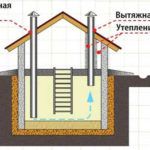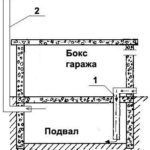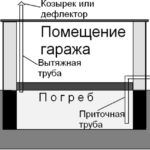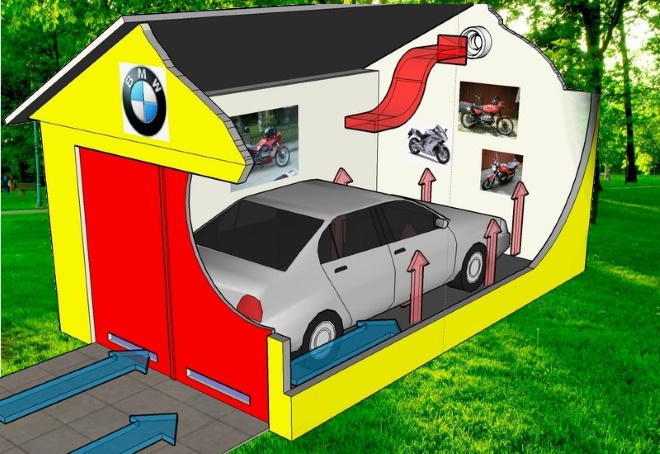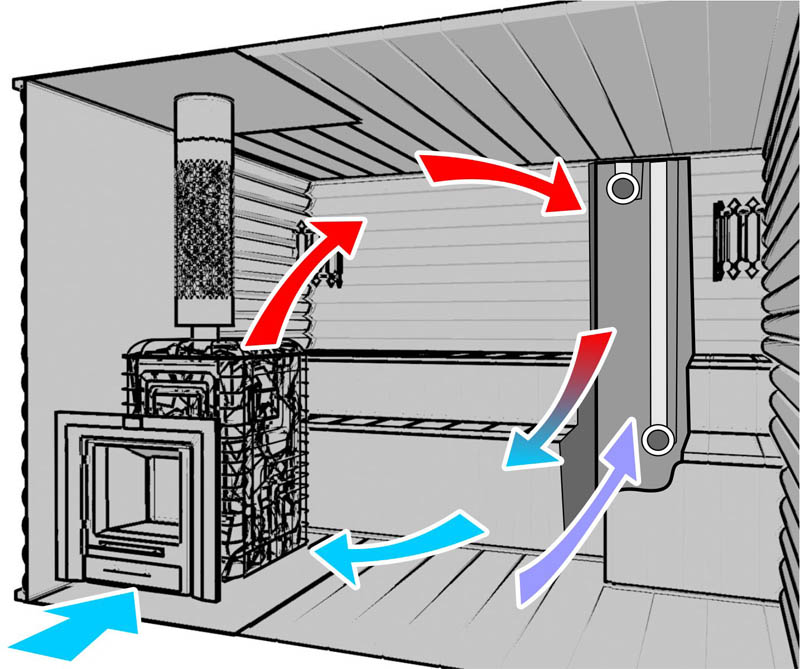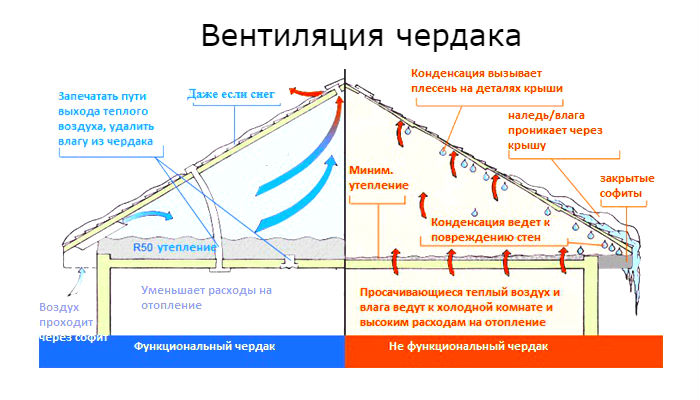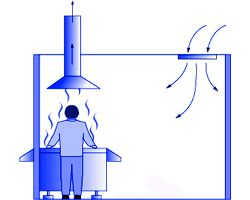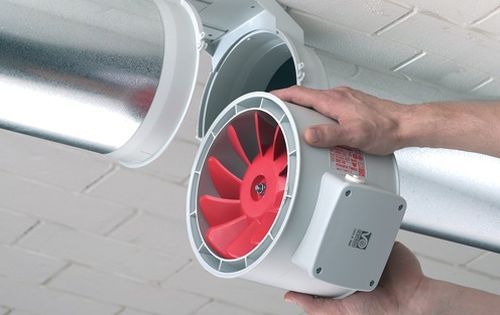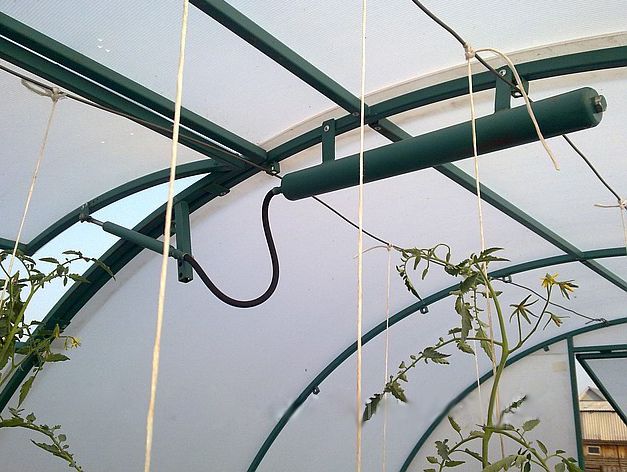A hood mounted in the garage cellar is necessary and this is obvious to every zealous owner. Some people realize that the formation of condensation due to temperature differences during the cold season is detrimental to the storage of vegetables and other supplies. Others understand that the imbalance in the microclimate with the formation of water vapor has the most negative impact on the life of the vehicle or installed equipment. Therefore, one way or another - the hood in the garage with a basement is done by everyone.
Drawing schemes
A basement hood in a garage is created on the basis of three different principles, namely:
- natural air circulation;
- in the cellar of the garage, a supply and exhaust system is mounted, using the principle of enhancing the air flow by natural and, let's say, not costly methods;
- to create supply and exhaust ventilation of the garage cellar, complex technical solutions are used, fully automated.
Each garage owner makes his own decision based on the size of the building and the level of humidity that occurs in the cellar during the winter.
Today, the industry offers many mechanical and electronic-mechanical solutions for organizing supply and exhaust ventilation of a garage basement. However, their cost is quite high and therefore the use is justified only in buildings of a really large size, as well as where the height of the garage ceiling is more than three meters.
Natural circulation hood
The simplest basement hood in a garage is based on natural air circulation under the influence of the temperature difference outside and inside. Such a system is created quite simply, which is clearly shown in the following diagrams.
The hood is mounted in several stages:
- an air supply pipe is installed, one of the ends of which is located outside the garage, and the other in the cellar. In this case, both points should be as close to the ground and the basement floor as possible;
- The chimney is mounted vertically, with one end extending half a meter above the highest point of the roof. The second is located in the cellar, while its end is under the ceiling.
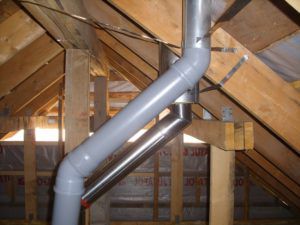
Such a hood works in a garage very simply. Warm ground keeps the basement temperature relatively high. Through the supply pipe, cold outside air enters the space and ends up in the cellar. There it heats up and goes out through the chimney due to the temperature difference between the outside air and the one in the basement.
Such a hood is easy to install, you can use large-diameter sewer pipes that are durable and look neat. This can be clearly seen in the next photo, and the video will show the process of assembling the hood in the garage from plastic pipes. Despite its utilitarian simplicity, such a garage system will provide a normal microclimate for small and medium-sized rooms.
Important note. In case of high humidity in the cellar, for example, due to the close occurrence of groundwater, the end of the chimney drops slightly below the ceiling. Under it is a condensate collection tank, which must be emptied periodically. It is convenient to use a wide cuvette stretched along one of the walls in the cellar to accumulate condensate.
Supply and exhaust ventilation
If a system based on natural air circulation does not provide the desired microclimate in the garage cellar, you can easily and fairly cheaply improve its performance.This is done using the following devices:
- a vane-type diffuser is mounted on the supply pipe, which constantly captures the wind flow and blows it into the basement space;
- an incandescent light bulb is installed inside the exhaust duct. Its heat heats the air and makes it move upward more intensively, increasing the volume of circulation;
- good results are shown by installing a deflector on the chimney. It forms an area of low pressure, as a result of which the extractor hood in the cellar works much more efficiently.
Despite the simplicity of such measures, they are quite effective. However, with a sufficiently large volume of air in the cellar, they may not be enough. Then it makes sense to install a fan in the exhaust pipe, which will forcibly form the outgoing air flow.
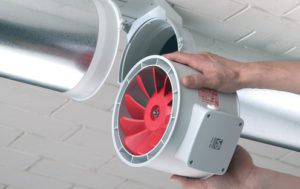
If the exhaust and supply pipes are made of sewer plastic, the installation of the fan is not difficult. You just need to purchase a product of the required size and place it in the joint between the elements. The following photos and videos show how easy it is to do this.
For rooms with high ceilings and with the existing "full-size" cellar, a forced draft hood is installed, built on electric motors. Practice shows that even compact uncontrolled fans mounted inside the exhaust pipes dramatically increase the efficiency of the system as a whole.
The forced circulation device can be very simple and easy to install. The result of the installation and the installation process are shown in the following photo and video.
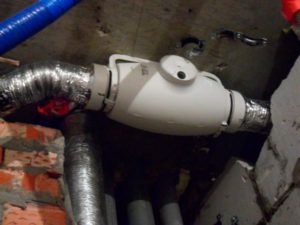
However, when creating supply and exhaust ventilation, it is necessary to adhere to several rules:
- the efficiency will be final and low enough if only forced removal of the air in the cellar is created. Therefore, fans must be installed on the supply pipes;
- in the cold season, an uncontrolled supply and exhaust system can drastically freeze the space in the cellar. Therefore, it is recommended to use the simplest electronic controls based on temperature control.
For the reliable functioning of a complex hood in the cellar or basement of the garage, software systems are used. It can be either a ready-made solution or an individually developed one. Today, the market offers so-called monoblocks, which immediately contain everything you need. However, the price of such a solution for a garage is prohibitive.
Conclusion
A high-quality hood, installed in the cellar, basement of the garage, can be very simple, but it works very efficiently. When developing a system, it is worth remembering that its main parts are the exhaust and supply pipes. Having created them from the necessary materials, you can go from simple to complex, achieving the necessary parameters for the operation of the supply and exhaust ventilation of the garage.

